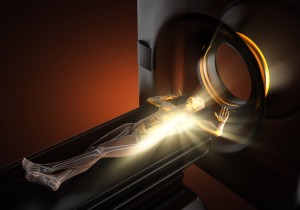A TRUS guided prostate biopsy is currently the most popular way of obtaining tissue samples from the prostate to determine the diagnosis of prostate cancer.
A TRUS guided prostate biopsy will usually be recommended for the following reasons:
Before undertaking a TRUS biopsy, we will talk to you at length about the advantages and disadvantages of undergoing the procedure, and the implications of a positive result.
We may also discuss other techniques of prostate biopsy with you which may be best suited to your clinical situation such as trans-perineal TRUS biopsy, Saturation TRUS biopsy or MRI guided biopsy. (see below).
The procedure is commonly performed under sedation and occasionally with local anesthetic as a day case.
You will be given antibiotics before and after the procedure with instructions on how to take them beforehand ( see side effects below)
It involves passing a small ultrasound probe into the back passage to visualise the prostate and the volume of the prostate is measured. This may be performed together with a telescope inspection of your bladder, you specialist will advise if this is required.
We then take a number of biopsies ( usually between 12-14) using a tiny needle, which are sent to the pathology laboratory for analysis. The whole procedure should take approximately 20 -30 minutes minutes and you will be able to go home once you have passed urine after. Please be advised that if you have sedation, you will not be able to drive yourself home.

A TRUS guided biopsy is a safe procedure. However, as with all invasive procedures there are some possible side-effects:
You may see blood in your urine or motion for up to 2 weeks, and in your semen for up to 6 weeks
About 1:100 men will suffer from a blood infection, which may require hospital admission and antibiotics. You will be given some antibiotics at the time of the procedure, and to take home, to reduce the risk of this.
The analysis of the prostate biopsies usually takes about 5-7 working days, and we will therefore make you an appropriate follow-up appointment to discuss the result.
Are there other ways of taking prostate biopsies?
Whilst TRUS guided biopsy is still the “standard” test for prostate cancer, more recently, new technologies and techniques are being developed to increase the accuracy and safety of prostate biopsy.
This includes Trans-perineal TRUS guided prostate biopsy and MRI guided in Gantry prostate biopsy.
Trans-perineal Prostate Biopsy has a reduced risk of serious sepsis (infection), compared with transrectal prostate biopsy, where the risk is about 2%.
The procedure is carried out under general anaesthetic as a day case. An ultrasound probe is used in the rectum to visualise the prostate and on average 20 biopsies are taken of the prostate, compared with 12-16 biopsies in the transrectal technique. This technique is used mainly to target areas of the prostate that may be difficult to reach with a transrectal biopsy.
If you have had a prostate MRI scan done prior to the biopsy, the exact location of any abnormal area on the scan can be accurately targeted with a template biopsy technique.
Generally there is blood in the urinary stream and in the semen for a few days after the procedure. It is rare to develop urine retention and infection is very rare.
Your clinician will discuss with you which type of biopsy is indicated in your particular situation.
At PUC, we are proud to have recently introduced state of the art MRI guided in-Gantry prostate biopsy and are the first specialist group in Perth to do so.

Our approach to delivering best care with this new technique involves working closely in with Specialist Uro-Radiologists from Perth Radiology Clinic. Our service and philosophy involves the following:
Your specialist may refer you to PUC or Perth Radiology clinic to have this procedure done. We will ensure that he/she will receive all the results and information required from your investigation promptly.
Your specialist will discuss with you if MRI guided prostate biopsy is suitable for you and make the appropriate referral as required.
We currently perform all MRI guided prostate biopsies at Perth Radiology Clinic at Wexford Medical Centre , SJOG Murdoch.
You will be contacted by our PUC team with information regarding the study and will be given antibiotics and an enema with instructions on when to use before the test.
The procedure itself takes up to an hour to perform and you must be able to lie still on your front in an MRI machine. If you are unable to tolerate being in confined spaces or unable to lie on your front – please inform us.
You are totally alert during this procedure. This is necessary as we will need to make small adjustments in your body position to ensure accurate results.
A small probe is inserted into the back passage , attached to a targeting device. Several MRI images are taken during which time, will allow us to control the targeting device for the actual biopsy.
The entire process takes anywhere between 30 – 60 minutes depending on how many abnormal areas may need to be biopsied.
Afterwards, you may go home after the procedure and we recommend that someone is with you/drives you if possible.
The side effects of mpMRI are similar to that of TRUS guided biopsy though is likely to be be less often and less severe as fewer biopsies are taken due to the ability to target accurately. These include: